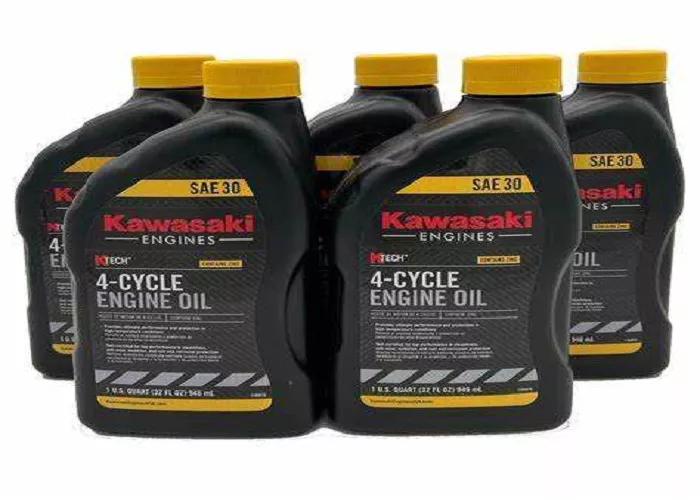Proper maintenance is crucial for keeping your lawn mower running efficiently. One of the most important aspects of maintenance is selecting the right oil viscosity (weight). Using the correct oil ensures smooth engine operation, reduces wear, and extends the machine’s lifespan.
Understanding Oil Viscosity (Weight)
What Does Oil Weight Mean?
SAE 30: Standard for moderate temperatures
10W-30: Good for varying temperatures
5W-30: Best for cold climates
SAE 20W-50: Suitable for high-temperature conditions
Why Does Viscosity Matter?
- Thin oil (low viscosity) flows easily in cold weather but may not protect well under high heat.
- Thick oil (high viscosity) provides better lubrication in hot conditions but can be sluggish in cold starts.
Choosing the wrong oil can lead to
- Poor engine lubrication
- Increased friction and wear
- Hard starting in cold weather
- Overheating in hot conditions
Types of Lawn Mower Oil
Conventional Oil
- Made from refined crude oil
- Affordable but breaks down faster
- Best for older mowers with simple engines
Synthetic Oil
- Chemically engineered for better performance
- Resists breakdown, lasts longer
- Excellent for extreme temperatures
- Recommended for high-performance mowers
Synthetic Blend Oil
- Mix of conventional and synthetic oils
- Better protection than conventional at a moderate price
- Good for frequent mowing
High-Viscosity vs. Low-Viscosity Oils
| Oil Type | Best For | Temperature Range |
|---|---|---|
| 5W-30 | Cold climates | Below 50°F |
| 10W-30 | Variable climates | 30°F–85°F |
| SAE 30 | Warm weather | Above 50°F |
| 20W-50 | Extreme heat | Above 85°F |
Manufacturer Recommendations
Briggs & Stratton: SAE 30 (moderate temps), 10W-30 (variable temps)
Honda: 10W-30 (most models)
Kohler: SAE 30 or synthetic 5W-30
Toro: 10W-30 or SAE 30
How to Change Lawn Mower Oil
Step-by-Step Guide
- Warm the engine (run for 5 minutes to loosen oil).
- Turn off and disconnect the spark plug (safety first).
- Drain old oil (tilt mower or use a drain plug).
- Replace oil filter (if applicable).
- Refill with fresh oil (use a funnel to avoid spills).
- Check oil level (dipstick should show full).
- Dispose of old oil properly (recycle at an auto shop).
Oil Change Frequency
- Every 25–50 hours of use (or at least once per season).
- First oil change should be after the first 5 hours (for new mowers).
Common Mistakes to Avoid
Using Car Oil in a Lawn Mower
- Car oils contain additives that can harm small engines.
- Always use oil labeled for small engines or lawn mowers.
Overfilling or Underfilling Oil
- Too much oil causes foaming and poor lubrication.
- Too little oil leads to engine damage.
Ignoring Oil Changes
- Old oil loses viscosity and collects debris.
- Regular changes prevent sludge buildup.
Using the Wrong Viscosity
- Thick oil in cold weather strains the engine.
- Thin oil in hot weather fails to protect.
Frequently Asked Questions (FAQs)
Can I use 5W-30 instead of SAE 30?
Yes, if temperatures fluctuate. 5W-30 works well in cold and moderate climates.
Is synthetic oil worth the extra cost?
Yes, for high-performance mowers or extreme temperatures. It lasts longer and protects better.
What happens if I use the wrong oil weight?
Poor lubrication, harder starts, and potential engine damage over time.
Can I mix different oil types?
Avoid mixing conventional and synthetic oils unless it’s a synthetic blend.
Conclusion
Regular oil changes with the correct viscosity will keep your mower running smoothly for years. Always consult your owner’s manual and follow best practices for optimal results.By following this guide, you ensure your lawn mower remains reliable, efficient, and ready for every mowing season.

